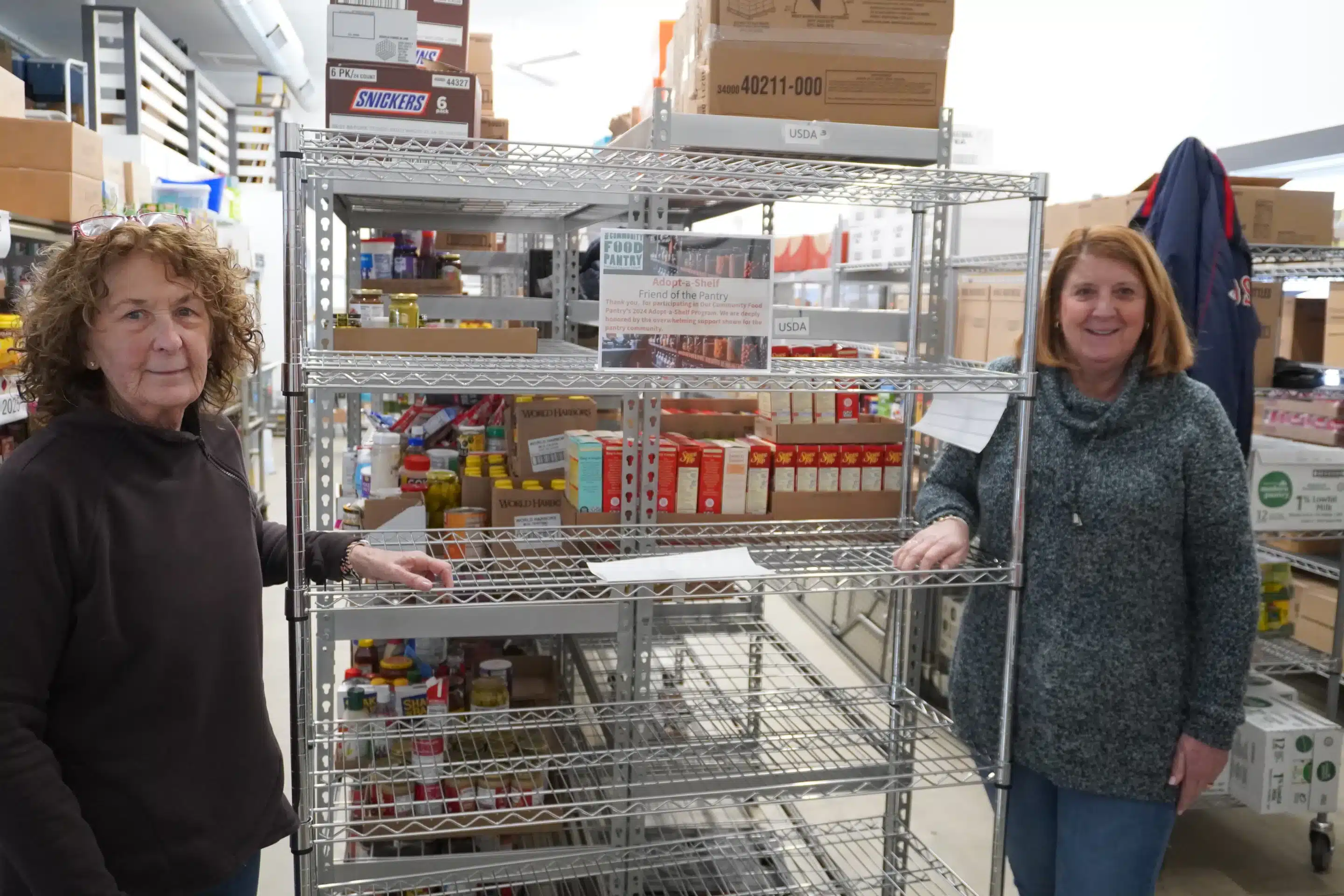Assistant Director Meg Raggio (left) and Director Sally Munson with Our Community Food Pantry.
Reminder Publishing file photo
SOUTHWICK — When the federal government announced in March it was cutting two food assistance programs, the director of Our Community Food Pantry was relieved when she learned the cuts would not affect its mission of meeting the needs of those struggling with food insecurity.
That changed recently when the nonprofit was notified by its largest food supplier, the Food Bank of Western Massachusetts, that the U.S. Department of Agriculture had canceled $440,000 worth of overall food deliveries for the four counties and 132,000 people it serves, including the pantry.
For the pantry, which provides food for over 150 families each week, that means that it’s making up the loss by buying more food from area grocery stores and big box retail stores that sell groceries and asking for donations of specific items like peanut butter.
Pantry Director Sally Munson explained how the cuts affect the operation of the pantry.
For years, Munson and Assistant Director Meg Raggio would go to the Food Bank’s website and order what they needed for the week and it would be delivered to its address at 222 College Hwy.
“There used to be six or seven pages of food that could be ordered,” Munson said. “Now it’s only two or three pages.”
The pantry relies on the food bank for items like rice, beans, cereal, milk, cheese, some meats and produce, and peanut butter.
“We’ve never had to have a peanut butter and jelly food drive,” Munson said about the pantry’s announcement last week asking for donations.
In addition to fewer items offered by the food bank, it also cut back on the amount that can be ordered — the pantry pays about 20 cents per pound for the food.
“Before, we could order 10 cases of, for example, rice. But now, we can only order eight,” Raggio said.
The pantry has been preparing for the cutbacks by stocking some of the items it provides, but it still needs the residents of Southwick, Granville, and Tolland to help as the need grows with donation of food or money.
And just like every family being squeezed by the cost of groceries, it affects the pantry.
“We’re constantly looking for deals,” Munson said about the weekly shopping which is paid for partly through a state and federal grant.
“It’s really the donors that make it possible,” Munson said.
She also said that since January, 55 additional families have signed up for assistance.
“We’ve been getting 11 families per month since the first of the year,” Munson said.
“Often, they come in crying because they have never asked for help before,” Munson said, adding that most families have at least one person working but they “just can’t make it.”
Produce is one of the most expensive foodstuffs purchased each year by the pantry.
The pantry is currently spending between $350 and $500 weekly for produce, and to make its financial donations go further it is working with Calabrese Farm to help.
But more is needed.
“That’s why our Plant-A-Row program is more important than ever,” Raggio said.
Each summer the pantry asks those who plant an annual garden to include one row for produce to be donated to the pantry.
Last year, six families signed up for the program and provided the pantry nearly 500 pounds of produce.
For those who want to plant a row for the pantry, Raggio suggested growing lettuce, cabbage, kale, tomatoes, peppers, squash, beans, any greens, corns, potatoes, herbs, flowers, cucumbers, any fruits and even eggplant.
Another motivation for gardeners is a change in the state’s Healthy Incentive Program, which allows anyone with an EBT card to purchase up to $20 of produce from farmers markets and farm stands per month and that $20 is then added back to their account. It was $40 before the state scaled back the program.
In an effort to generate additional food donations, the pantry now has a link on its website and its Facebook page to an Amazon Wishlist where food donations can be purchased and shipped directly to the pantry.
Munson said on May 27, Amazon delivered 17 boxes of food that residents bought for the pantry, which was a great help.
While the now pantry appears to safe from any cuts at the federal level, Munson did say the state’s Healthy Incentive Program has been changed.
The program allows anyone with an EBT card to purchase up to $20 of produce from farmers markets and farm stands per month and that $20 is then added back to their account. Munson said it was $40 until recently.
To learn more, call 413-569-9876, visit ourcommunityfoodpantry.org, email directors@admin.community-food-pantry.org, or visit the pantry’s Facebook page.


